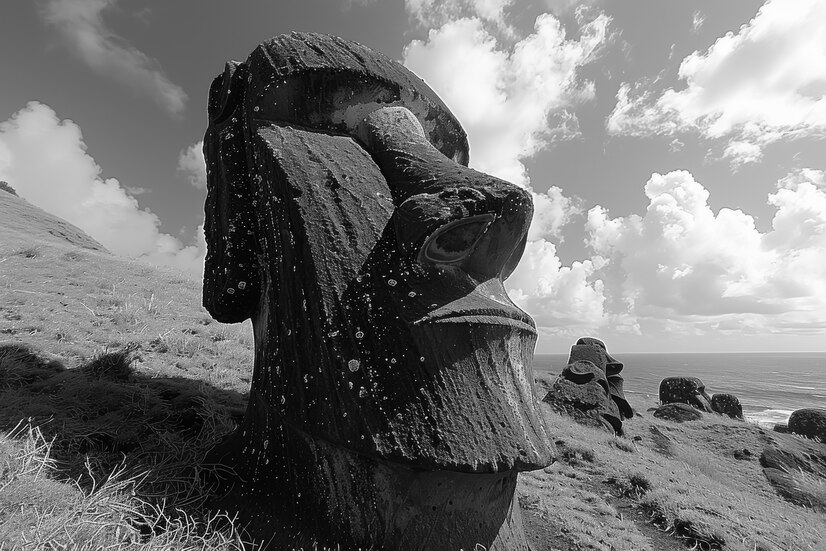HOME
Genesis Friars 1972: A Defining Year in Progressive Rock History

In the realm of progressive rock, few moments stand as pivotal as Genesis’ historic 1972 performance at Friars. This was more than just a concert; it was a defining milestone that resonated throughout the genre, shaping the future of prog-rock and cementing Genesis’ legacy. For fans and music historians alike, 1972 was a year of transformation and innovation that redefined what rock music could be. In this blog post, we’ll explore the intricacies of this groundbreaking period, the band’s artistic evolution, and the lasting impact of their iconic performances.
The Genesis of a Movement
In the early Genesis Friars 1972 was already on the rise, carving out a niche with their unique blend of storytelling and complex musical compositions. By 1972, they had solidified their presence in the burgeoning progressive rock scene, characterized by elaborate stage performances and intricate arrangements. The Friars performance in particular captured the zeitgeist of the era. It was a time when the boundaries of rock were being pushed in all directions, and Genesis was at the forefront, leading the charge into uncharted musical territories.
Their lineup during this period was a powerhouse, featuring Peter Gabriel’s theatrical presence coupled with Tony Banks’ sophisticated keyboard work, Steve Hackett’s innovative guitar techniques, Mike Rutherford’s versatile bass playing, and Phil Collins’ dynamic drumming. Together, they formed a synergy that set them apart from their contemporaries, crafting a soundscape that was both intricate and emotionally resonant.
The Significance of Friars 1972
The Friars 1972 concert was a watershed moment for Genesis. It was here that they performed tracks from their critically acclaimed album “Foxtrot,” one of the most influential records in the progressive rock canon. The venue, known for its intimate atmosphere, provided the ideal setting for the band’s elaborate and theatrical show. Fans were treated to performances that transcended the typical rock concert experience, blending music and visual storytelling in a way that captivated audiences.
The setlist for Friars included epics such as “Watcher of the Skies” and “Supper’s Ready,” both of which showcased the band’s penchant for lengthy compositions that seamlessly blended rock with elements of classical and folk music. These performances highlighted Genesis’ ability to weave complex narratives into their music, a hallmark of their style that would influence countless artists in the years to come.
Foxtrot’s Legacy
Released in October 1972, “Foxtrot” was a turning point for Genesis, bolstering their reputation as innovators in the progressive rock genre. The album’s signature track, “Supper’s Ready,” is often cited as one of their crowning achievements—a sprawling, multi-part suite that encapsulates the essence of the band’s creative vision. With its ambitious scope and intricate arrangements, “Foxtrot” elevated Genesis from cult favorites to progressive rock legends.
The themes explored in “Foxtrot”—ranging from apocalyptic visions to allegorical tales—captured the imagination of listeners and critics alike. This was an album that demanded attention, challenging the listener to engage with its complex structures and thought-provoking lyrics. Its success paved the way for future concept albums, inspiring other bands to explore similarly ambitious themes and compositions.
A New Era for Stage Performance
Genesis’ 1972 tour wasn’t just about the music; it was an immersive experience that redefined live performance. Peter Gabriel’s theatrical flair became a key component of their shows, as he donned elaborate costumes and engaged in captivating storytelling that brought their songs to life. This approach transformed their concerts into multimedia events, where visual and auditory elements combined to create a deeply engaging experience.
The use of costumes and theatrics had a profound impact on the music industry, influencing artists across genres to incorporate more visual elements into their performances. Genesis’ willingness to experiment with stagecraft opened the door for future acts to explore similar avenues, ultimately contributing to the development of the modern concert experience as we know it today.
The Rise of Progressive Rock
Genesis’ success in 1972 was indicative of a larger movement within the music industry. Progressive rock was gaining traction, with bands like Yes, King Crimson, and Pink Floyd also pushing the boundaries of conventional rock music. This genre was defined by its fusion of diverse musical styles, complex compositions, and philosophical themes, appealing to audiences seeking something beyond the mainstream.
The Friars performance and the release of “Foxtrot” helped to solidify Genesis’ place within this burgeoning movement. They stood out not only for their musical prowess but also for their ability to connect deeply with their audience through storytelling and introspection. This connection fostered a sense of community among fans, who found solace and inspiration in the band’s exploration of existential themes and imaginative soundscapes.
Impact on Future Generations
The legacy of Genesis’ 1972 performances continues to resonate with musicians and fans alike. Their innovative approach to music and live shows set a benchmark for creativity and artistic expression, inspiring countless artists to push the envelope in their own work. Bands like Marillion, Porcupine Tree, and Dream Theater have cited Genesis as a key influence, carrying the torch of progressive rock into new territories.
The themes and techniques pioneered by Genesis in the early 1970s laid the foundation for the evolution of the genre, encouraging experimentation and the blending of disparate musical elements. This legacy has ensured that progressive rock remains a vibrant and dynamic force in the music world, continually evolving while honoring the spirit of its pioneers.
Rediscovering Genesis in the Modern Era
For those new to Genesis or revisiting their work, the 1972 era offers a wealth of material that captures the band’s creative energy and visionary spirit. Albums like “Foxtrot” and performances like Friars provide an entry point into a world of intricate compositions, thought-provoking lyrics, and theatrical innovation.
Modern technology has made it easier than ever to access these classic recordings, allowing new generations to explore the rich tapestry of Genesis’ music. Streaming platforms, remastered editions, and live recordings offer fans the opportunity to experience the magic of Genesis as if for the first time, ensuring that their influence endures for years to come.
The Power of Storytelling in Music
At the heart of Genesis’ appeal is their mastery of storytelling through music. This ability to weave narratives into their compositions creates an emotional depth that resonates with listeners on multiple levels. Whether exploring grandiose themes or intimate moments, Genesis’ music invites the audience into a world of imagination and introspection.
By blending literary and musical elements, Genesis crafted songs that were both intellectually stimulating and emotionally engaging. This approach not only set them apart from their contemporaries but also elevated the art form, demonstrating the profound impact that storytelling can have in music.
The Artistic Evolution of Genesis
Genesis’ 1972 performances marked a crucial phase in their artistic evolution. This period saw the band refining their sound and expanding their creative horizons, laying the groundwork for future successes. The release of “Foxtrot” and their innovative stage shows were pivotal moments that showcased their growth as musicians and performers.
Their willingness to experiment and push boundaries inspired countless artists to follow suit, fostering an environment of creativity and exploration within the music industry. By continuously challenging themselves and their audience, Genesis demonstrated the potential for artistic evolution and the enduring power of innovation.
Lessons from a Pioneering Band
Genesis’ impact on music transcends mere technical prowess and stagecraft; it offers valuable lessons in creativity, collaboration, and perseverance. Their ability to blend diverse influences, maintain artistic integrity, and continuously evolve serves as a model for aspiring musicians and creators across disciplines.
By examining the strategies and philosophies that propelled Genesis to success, artists today can glean insights into navigating the complexities of the modern music industry. The band’s legacy serves as a testament to the power of artistic vision and the importance of staying true to one’s creative instincts.
Conclusion
As Genesis’ influence continues to ripple through the music world, the invitation remains open for new generations to discover their timeless music. The spirit of exploration and innovation that defined their 1972 performances lives on, inspiring artists and fans to push boundaries and challenge conventions.
For those inspired by Genesis’ legacy, there are ample opportunities to engage with their music and explore the broader world of progressive rock. Concerts, tribute bands, and online communities provide spaces for fans to connect, share their passion, and celebrate the enduring impact of Genesis’ revolutionary contributions to the genre.
In reflecting on Genesis’ pivotal year of 1972, we are reminded of the power of creativity and the potential for music to transcend time and space. Their legacy endures, inviting us all to explore the possibilities that lie at the intersection of art and imagination.
HOME
Waterproof RGB LED Strips: High-Performance Lighting Built for Rain, Heat, and Humidity

Introduction
Lighting is a critical element in creating functional, safe, and visually appealing spaces. Whether you’re illuminating outdoor patios, gardens, commercial walkways, or architectural features, you need lighting solutions that can withstand environmental challenges. This is where Waterproof RGB LED Strip shines. Designed for durability, versatility, and high performance, these LED strips are perfect for applications exposed to rain, heat, or humidity. Paired with a reliable Waterproof Power Supply, they offer long-lasting, vibrant illumination for both residential and commercial projects.
What Are Waterproof RGB LED Strips?
Waterproof RGB LED Strips are LED lighting solutions encased in a protective layer that shields the LEDs from moisture, dust, and external environmental factors. The “RGB” feature means they can produce red, green, and blue colors, allowing users to mix and create millions of colors for mood lighting, accent lighting, or dynamic visual effects.The waterproof design makes these LED strips ideal for outdoor installations. Whether you want to highlight your garden path, illuminate a swimming pool edge, or create colorful lighting for a commercial outdoor space, these LED strips provide reliable performance even under challenging weather conditions.
Benefits of Waterproof RGB LED Strips
Waterproof RGB LED Strips offer multiple advantages over traditional LED lighting. Their main benefit is resistance to water, dust, and heat, which ensures consistent performance regardless of environmental conditions. These strips are energy-efficient, consume minimal electricity, and generate less heat compared to conventional lighting, which makes them both cost-effective and safe.
When paired with a Waterproof Power Supply these LED strips operate smoothly, maintain consistent brightness, and avoid potential damage caused by voltage fluctuations or moisture. This combination ensures a long-lasting and reliable lighting solution for any environment.
Applications of Waterproof RGB LED Strips
The applications of Waterproof RGB LED Strips are vast and varied. In residential settings, they are perfect for outdoor patios, balconies, gardens, and pool areas. Their color-changing capability allows homeowners to create dynamic lighting moods for parties, relaxing evenings, or seasonal decorations.
In commercial spaces, these LED strips are widely used in hotels, restaurants, bars, retail stores, and event venues. They can highlight architectural features, illuminate pathways, or create eye-catching decorative effects. Because they are waterproof and resistant to humidity and heat, businesses can rely on them for long-term performance without frequent replacements or maintenance.
Choosing the Right Waterproof Power Supply
A Waterproof Power Supply is essential for ensuring the safety and efficiency of outdoor LED installations. It protects the system from electrical hazards caused by moisture, rain, or high humidity, and guarantees consistent voltage to the LED strips. Selecting a high-quality waterproof power supply ensures that your Waterproof RGB LED Strips operate at peak performance and maintain their vibrant colors and brightness over time.
When choosing a power supply, consider the total wattage of your LED strips, the IP rating for waterproofing, and the reliability of the manufacturer. Investing in a high-quality power supply prevents malfunctions, extends the life of the LEDs, and provides peace of mind for both residential and commercial installations.
Why Waterproof RGB LED Strips Are Worth the Investment
Investing in Waterproof RGB LED Strips is not just about lighting; it’s about durability, aesthetics, and safety. Their high-performance design ensures that your outdoor spaces remain beautifully illuminated in all weather conditions. Unlike standard LED strips, waterproof versions resist damage from water and humidity, making them ideal for long-term installations.
Paired with a reliable Waterproof Power Supply, these LED strips provide consistent, vibrant, and energy-efficient lighting. For contractors, designers, and homeowners alike, choosing high-quality waterproof LED strips ensures that outdoor spaces look impressive and function reliably year-round.
Conclusion
Waterproof RGB LED Strips are the ultimate solution for high-performance outdoor lighting. Designed to withstand rain, heat, and humidity, these LED strips provide versatile, energy-efficient, and long-lasting illumination for residential and commercial projects. By pairing them with a quality Waterproof Power Supply, you ensure safety, consistency, and vibrant colors for years to come.Whether you are lighting up a garden, a patio, a commercial façade, or a pool area, investing in waterproof LED solutions guarantees that your spaces remain visually stunning, functional, and reliable under any environmental condition.
HOME
Rehabilitation Services: Helping Seniors Regain Independence

The Importance of Independence for Seniors
Maintaining autonomy is a cornerstone of well-being for older adults. Being able to make daily decisions, pursue hobbies, and manage personal routines contributes to both mental and emotional health. Independence fosters confidence, reduces stress, and helps seniors feel in control of their own lives, which can positively impact overall quality of life. Even small acts, like preparing meals or going for a walk, provide a sense of purpose and accomplishment that is essential for maintaining dignity as one ages.
For seniors requiring additional support, selecting the proper care environment can preserve their sense of autonomy while ensuring safety. A skilled nursing home facility Missouri, for example, balances professional medical care with opportunities for residents to engage in meaningful activities and maintain daily routines. This approach enables seniors to receive necessary assistance without compromising their independence or personal autonomy.
Core Components of Rehabilitation: Physical, Occupational, and Speech Therapies
Physical Therapy
Physical therapy aims to restore mobility, improve balance, and enhance strength, particularly for seniors. Custom programs often follow surgeries such as hip or knee replacements, focusing on targeted exercises to expedite recovery and prevent future injuries. Therapists employ various techniques, including stretching, strength exercises, and balance training, to alleviate pain and address mobility challenges, thereby fostering a more active and secure lifestyle for seniors who engage in activities such as walking, gardening, or light sports.
Occupational Therapy
Occupational therapy helps seniors relearn practical skills and daily activities, such as dressing, bathing, and meal preparation, by utilizing adaptive techniques and devices to enhance their independence. Therapists assess and modify environments to enhance safety and accessibility, fostering independence and minimizing accident risks.
Speech Therapy
Speech therapy is essential for individuals with speech or swallowing challenges due to strokes, neurological disorders, or surgery. Therapists create tailored exercises to enhance communication and ensure safe swallowing, thereby improving quality of life and social engagement. Support often includes language exercises, memory training, and speech clarity strategies, with more serious cases benefiting from augmentative and alternative communication tools.
How Technology Is Transforming Rehabilitation
Innovative technologies, such as robotic exoskeletons, motion sensors, and wearable fitness trackers, are significantly enhancing rehabilitation for seniors. These tools offer safe guided movements, real-time feedback, and motivating virtual reality environments, thereby improving rehabilitation outcomes and enhancing senior engagement. Moreover, video-based therapy and telehealth services expand accessibility for seniors in remote areas, allowing them to receive care from home.
The Role of Recreational Activities in Recovery
Recreational activities play a crucial role in senior rehabilitation by complementing traditional therapy. Engaging in hobbies such as gardening, music, or crafts helps alleviate loneliness and depression while promoting gentle physical activity. Activities such as art classes and music therapy foster fine motor skills and cognitive engagement. Group activities enhance social interaction and provide a sense of connection and accomplishment, ultimately improving mental health, strengthening social bonds, and boosting overall wellness, thereby creating an environment conducive to recovery.
Adapting Homes for Independent Living
Simple home modifications for seniors, such as grab bars, ramps, and non-slip flooring, can significantly improve safety and accessibility during rehabilitation. Other enhancements, including wider doorways, better lighting, stair lifts, and accessible bathrooms, are also beneficial. Occupational therapists often suggest personalized adjustments to facilitate mobility and prevent falls, thereby reducing anxiety for both seniors and their families by ensuring a secure living environment.
Community-Based Rehabilitation and Support Programs
Community-based rehabilitation programs, such as PACE, support seniors by providing medical care, therapy, transportation, and social events, thereby promoting independence and reducing hospitalizations. These initiatives address physical, social, and psychological needs, while local resources enhance accessibility and encourage engagement through volunteer work and educational events, thus preventing isolation.
Conclusion
Rehabilitation services are crucial for seniors who wish to maintain their independence. Through the strategic combination of traditional therapies, technological innovations, recreational activities, home modifications, and supportive community programs, older adults are empowered to overcome challenges and lead fulfilling, self-reliant lives. As the field of rehabilitation continues to advance and adapt, more seniors will have the opportunity to enjoy active, independent years with the dignity they deserve.
HOME
The Cultural Significance of Digital Libraries in Modern Society

Quiet Revolutions in Reading
Books have always been more than just paper and ink. They hold stories that shape beliefs memories that span centuries and blueprints for futures not yet written. But the shelf space needed to store all this knowledge? That’s gone digital. Now readers tap rather than turn swipe instead of shelve. The shift toward e-libraries has quietly redrawn the cultural map of reading.
In this reshaped landscape https://z-lib.qa continues to play an essential role in global access to knowledge. More than a platform it functions as a virtual public square where readers from Lagos to Lisbon explore works once locked away in elite institutions. And that matters. Because the kind of access once defined by geography and privilege is now redefined by bandwidth and curiosity.
Where Books Meet Borders
Digital libraries don’t care where someone lives. That’s a radical change. For decades certain texts were simply out of reach—too expensive too obscure or too politically sensitive. Now those same titles appear on screens in seconds. This borderless reach isn’t just convenient. It’s cultural currency.
Imagine a young student in a rural town exploring Renaissance philosophy or Indigenous literature without needing a visa or travel grant. That student gains not just knowledge but a sense of inclusion in a larger conversation. And with global access comes global responsibility. The way people engage with ideas now carries weight far beyond their hometowns.
How E-Libraries Shape Cultural Memory
The past lives online. Every digitized manuscript journal or novel becomes a preserved artifact not just of content but of context. Digital libraries serve as living archives echoing voices that might otherwise be forgotten. When a rare text is scanned and shared it joins a chorus of perspectives that broaden how culture is remembered.
And this isn’t just about old books. New authors self-publish on e-library platforms finding readers without the backing of major publishers. Their stories enter the cultural bloodstream without gatekeepers filtering the flow. Some of these works eventually influence public debates inspire films or stir political discussions. One entry in a digital library can spark something far bigger than itself.
Different Ways Digital Libraries Are Changing the Game
This shift doesn’t just impact what people read but how they engage with the world. Consider three key areas where this change is most visible:
-
Knowledge Without Permission
Traditional libraries often come with sign-up sheets ID checks and limited hours. E-libraries remove these hurdles. Readers no longer wait for books to become available. They download what they need when they need it. That freedom can be a lifeline especially in places with few physical libraries.
-
Diverse Voices Gain Ground
Writers once pushed to the margins now find loyal readers. From queer poets in Manila to historians in Nairobi digital libraries level the playing field. They don’t just reflect culture—they reshape it by elevating new voices and disrupting old hierarchies.
-
Learning Becomes Personal
With countless books at their fingertips readers mix and match topics in ways traditional curricula rarely allow. Someone exploring post-colonial theory might stumble into art history then pivot to climate science. That nonlinear path mirrors how culture really grows—messy layered and full of surprise.
In some corners of the web like reddit communities even share ways to connect with these libraries despite censorship or access barriers. This grassroots energy reflects how deeply people value the ability to read what they choose.
As digital libraries continue growing their influence seeps into everything from how textbooks are updated to how protest slogans are written. Literature no longer waits quietly in stacks. It lives among people on screens and in stories they pass on. The shift is already here. Now it’s just a question of how much further it can go.
-

 HEALTH2 years ago
HEALTH2 years agoIntegrating Semaglutide into Your Weight Loss Plan: A Practical Guide
-

 HOME IMPROVEMENT2 years ago
HOME IMPROVEMENT2 years agoHow to Choose the Perfect Neutral Area Rug for Every Room
-

 LAW1 year ago
LAW1 year agoTeenage Drivers and Car Accidents in California: Risks and Parental Liability
-

 CONSTRUCTION1 year ago
CONSTRUCTION1 year agoConstruction Site Safety Regulations in New York and Your Rights as a Worker
-

 LAW1 year ago
LAW1 year agoPost-Divorce Considerations in California: Modifications and Long-Term Planning
-

 HOME2 years ago
HOME2 years agoSandra Orlow: The Teen Model Who Captivated the Internet
-

 FINANCE1 year ago
FINANCE1 year agoDigital Asset Management in Florida Estate Planning
-

 LAW1 year ago
LAW1 year agoKentucky’s School Football: Concussions, Injuries, and Legal Options
